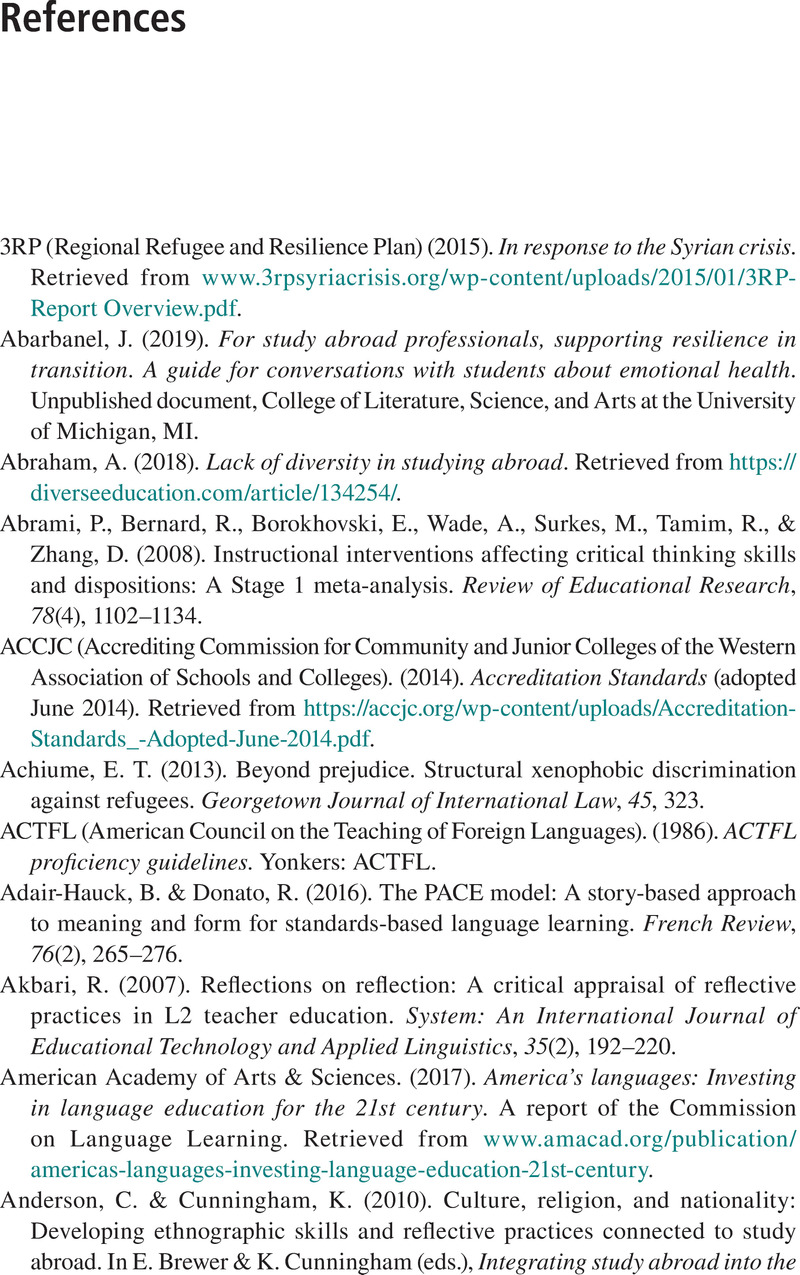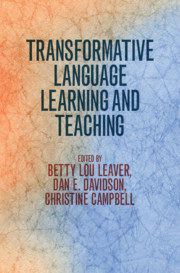Book contents
- Transformative Language Learning and Teaching
- Transformative Language Learning and Teaching
- Copyright page
- Contents
- Figures
- Tables
- Contributors
- Foreword
- Acknowledgments
- Abbreviations
- 1 Introduction
- Part I Theoretical Framework
- Part II Transformative Language Learning and Teaching Applications in Government Programs
- Part III Transformative Language Learning and Teaching Applications in University Programs
- Part IV Transformative Language Learning and Teaching Applications in Immersion Programs
- Part V The Learner
- Part VI Faculty Development
- Part VII Assessment
- References
- Index
- References
References
Published online by Cambridge University Press: 26 January 2021
- Transformative Language Learning and Teaching
- Transformative Language Learning and Teaching
- Copyright page
- Contents
- Figures
- Tables
- Contributors
- Foreword
- Acknowledgments
- Abbreviations
- 1 Introduction
- Part I Theoretical Framework
- Part II Transformative Language Learning and Teaching Applications in Government Programs
- Part III Transformative Language Learning and Teaching Applications in University Programs
- Part IV Transformative Language Learning and Teaching Applications in Immersion Programs
- Part V The Learner
- Part VI Faculty Development
- Part VII Assessment
- References
- Index
- References
Summary

- Type
- Chapter
- Information
- Transformative Language Learning and Teaching , pp. 250 - 283Publisher: Cambridge University PressPrint publication year: 2021



